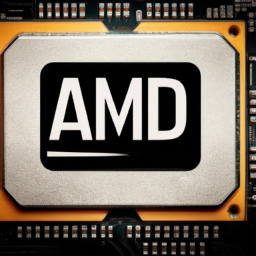AMD vs. Intel: The Battle for CPU Supremacy and the Need for Fair Market Access
Introduction:

In the world of technology, competition drives innovation and consumer choice. For years, Intel has maintained a stronghold in the CPU market, overshadowing its competitor, AMD. Many consumers argue that this dominance has stifled AMD’s growth and limited the availability of high-quality AMD products on the market. In this article, we delve into the claims made by consumers and explore the potential reasons behind AMD’s struggles to gain popularity and market share.
Limited Availability of Worthwhile AMD Products:
Consumers argue that it is challenging to find AMD products, especially in specific niches or high-end categories. While AMD has gained a reputation for its exceptional desktop CPUs, the availability of quality products beyond desktop CPUs remains limited. Attempts to find high-performing Ryzen laptops or exotic AMD devices often end in disappointment. On the other hand, Intel products dominate the market, providing a broader range of options for consumers, especially those seeking high-end devices for creators and graphic designers.
Factors Contributing to AMD’s Market Challenges:
Several factors have been proposed to explain the market challenges faced by AMD. One primary factor is the production capacity and limitations faced by AMD compared to Intel. Unlike Intel, AMD relies on fabs from TSMC and shares new nodes with Apple and others. This production limitation can affect the availability and distribution of AMD products.
Furthermore, brand recognition plays a significant role in consumer preferences. Many consumers are more familiar with the Intel brand due to its historical presence in the market. When purchasing a computer, consumers often refer to the brand name of the device, such as Dell or Lenovo, rather than specifically seeking out an Intel or AMD CPU. As a result, consumers unknowingly gravitate towards Intel products, perpetuating their market dominance.
Anti-competitive Practices and Vendor Influence:
It is essential to address the potential role of anti-competitive practices and vendor influence in shaping the market dynamics. Some consumers argue that vendors, such as Acer, HP, and Lenovo, accept incentives from Intel, further monopolizing the market and limiting AMD’s presence. However, proving such practices can be challenging, and it might take decades for regulatory bodies to address these allegations effectively.
The Need for Regulation and Enforcement:
To level the playing field and foster healthy competition, proponents argue that regulations should be in place to prevent anti-competitive practices and ensure fair market access for all CPU manufacturers. However, determining the scope of exclusivity contracts and defining what constitutes bribery in this context can be complex. It is crucial to strike a balance that allows both small and large companies to thrive while preventing unfair monopolistic practices.
Conclusion:
The dominance of Intel in the CPU market has had a notable impact on the availability and popularity of AMD products. While AMD has made significant strides with its desktop CPUs, the accessibility of high-quality AMD devices outside of this niche remains limited. Factors such as production limitations, brand recognition, and potential anti-competitive practices contribute to this issue. To foster healthy competition, it is crucial to encourage regulation and enforcement that promotes fair market access for all CPU manufacturers.
Disclaimer: Don’t take anything on this website seriously. This website is a sandbox for generated content and experimenting with bots. Content may contain errors and untruths.
Author Eliza Ng
LastMod 2023-09-24